Las Vegas joins leisure locales in serving health service-seeking travelers

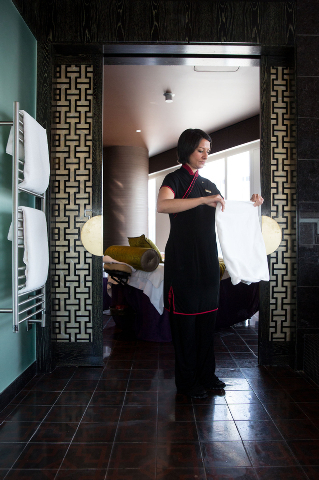
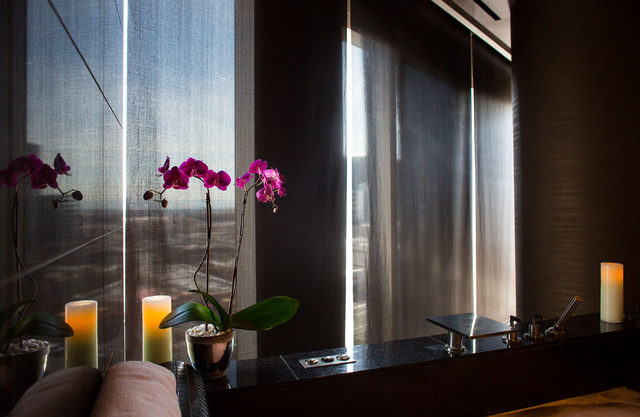


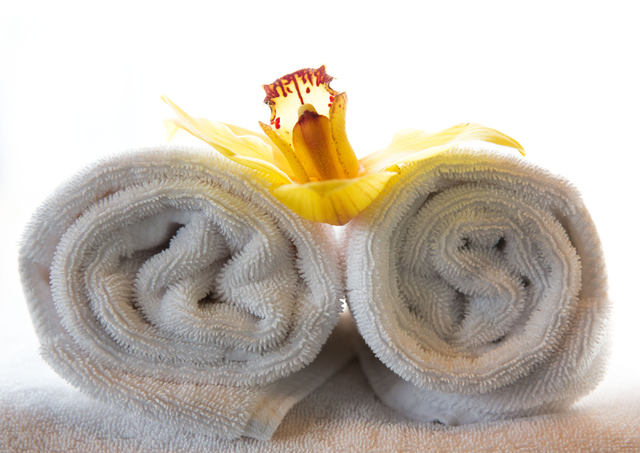
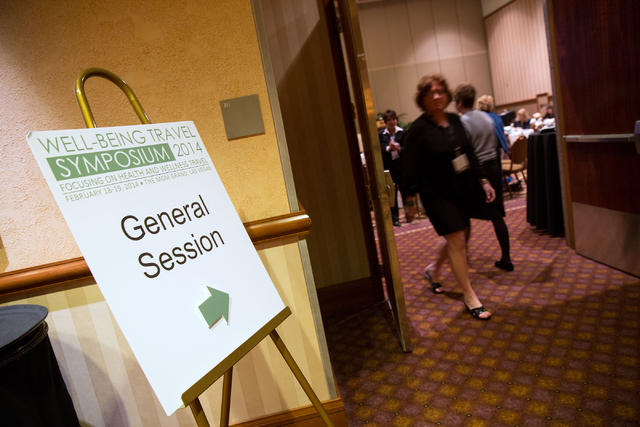

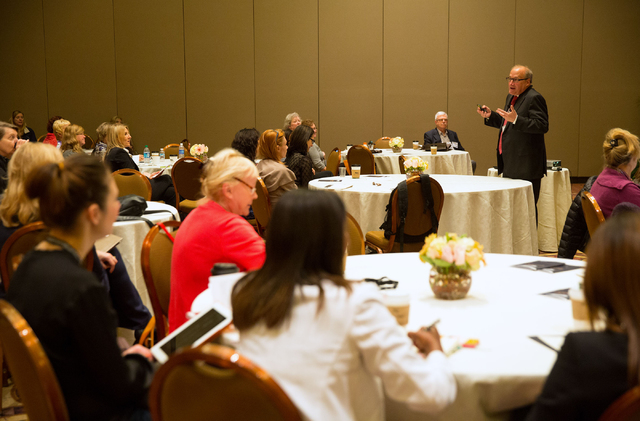

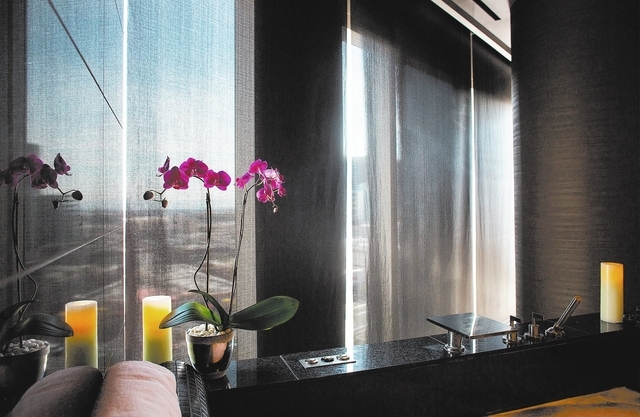
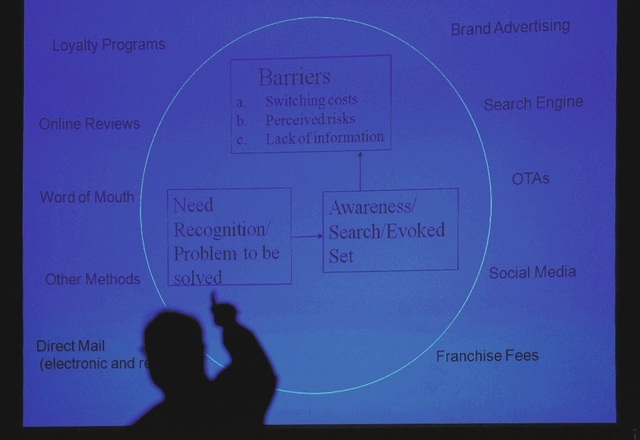
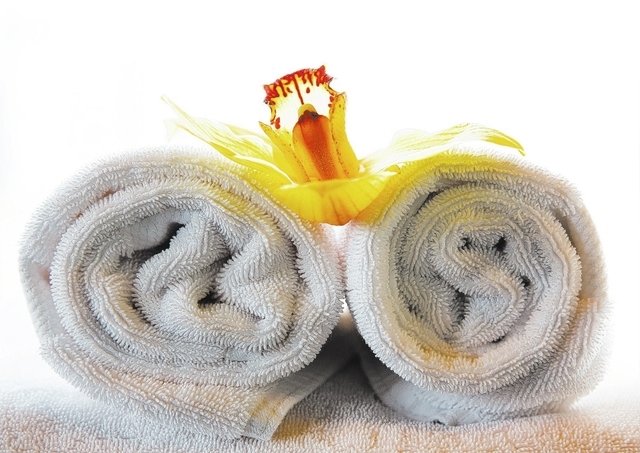
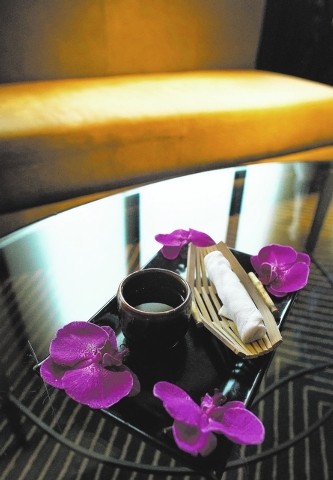
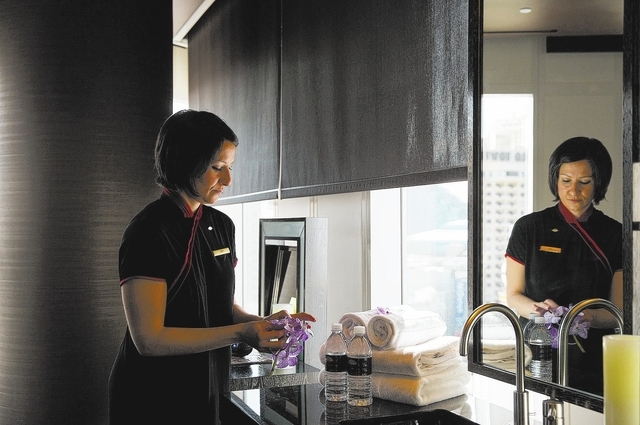
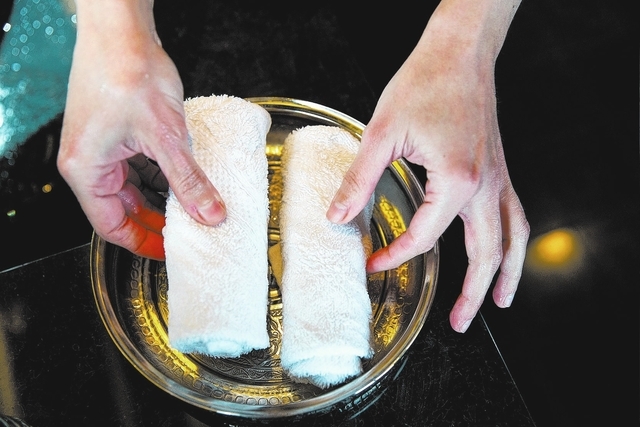
Nestled in a world within CityCenter, the Mandarin Oriental’s spa gives off ancient Asian vibes designed to relax and transport. Golden-hued easy chairs provide a resting place for clients seeking treatment, while smells of musky oil waft in the air and soft music with distinctive Oriental tones permeates the room.
As one of four Forbes five-star spas in the city, the business is just one of many luxury palaces in Las Vegas.
It’s a relaxing way to make a lot of money.
Wellness tourism is a $438 billion global industry, with about 60 percent of that business volume taking place in the United States, according to Well-Being Travel, a marketing organization that focuses on educating travel agents on the growing interest in health, wellness and medical travel.
Wellness tourism is expected to grow exponentially in coming years.
“While it’s a niche market — consumers are demanding health and wellness in their daily lives and that’s going to continue when they’re on their business trips or on leisure vacations,” said Ann Marie Moebes, executive vice president of Well-Being Travel.
At the Las Vegas Convention and Visitors Authority, Cheryl Smith oversees efforts to increase and enhance medical and wellness tourism in her position as the authority’s medical and wellness tourism manager. In the health segment, the convention authority is focused on medical and wellness tourism, and increasing bookings for medical meetings and bioskills training.
first-time symposium
In late February, the Well-Being Travel Symposium was for the first time held in Las Vegas. About 80 travel agents and interested parties attended the events at the MGM Grand Conference Center.
“Las Vegas has been a terrific host as a city,” Moebes said. “The Las Vegas Convention and Visitors Authority has done a great job in working with us, as has MGM.”
As a destination, Smith said, Las Vegas has to offer more as travel agents will have more questions about available wellness opportunities for their clients.
“Overall, I think it was extremely successful but I will also say it’s a beginning step,” Smith added about the conference.
Educational components of the event included a session hosted by Stowe Shoemaker, dean of the Harrah College of Hotel Administration at the University of Nevada, Las Vegas. He told the travel agents that spas can differentiate themselves from others in the market by offering personalized services or deals. He also encouraged constant communication with clients.
“You don’t want them going to Google, where there are more choices,” Shoemaker said.
Jennifer Lynn, spa director at Mandarin Oriental Las Vegas and chairwoman of the Las Vegas Spa Association board, echoed Shoemaker.
“We’ve found that for us, the means in which we stand out is through our level of service and our ability to personalize and intimately connect with our guest,” she said.
Moebes said the industry will focus more on concentrated marketing and organizing wellness travel as a niche segment.
“It’s been going on in silos, but now it’s starting to come together as an industry,” Moebes said. “We think the consumer is driving it.”
spa city
Wellness products are already here.
Las Vegas, for instance, is already home to world-renowned spas: Canyon Ranch, The Spa at Trump and Four Seasons, among them. Las Vegas has 45 resort spas in the tourist corridor. Of those, four are Forbes five-star spas and six are Forbes four-star spas.
“Las Vegas has more spas per capita … than any other city that we’re aware of,” Moebes said.
Many casino spas average 40 to 60 treatment rooms. Others, such as Mandarin Oriental with 16, are smaller. Their largest clientele comes from Southern California, with a strong contingent hailing from the Northeast.
“There is a contingency of people who come here for the wellness aspect of Vegas,” Lynn said. “We have some of the greatest spas in the world in a very short radius in which you could literally travel from our Oriental heritage here to Italy to influences from all around the world.”
She added, rather quickly, that she doesn’t think spas are Las Vegas’ only draw, although it is one reason they choose the destination.
Mandarin Oriental’s client base is about 60 percent female, with most of the clientele 35 to 55 years old for both genders. About 1,500 people come through the spa each month, up about 15 percent in the past year.
“We’re seeing that collectively as a hospitality business here,” Lynn said. “Room spending is going up and food and beverage spending is going up.”
The average spa spend is $190; the average stay is 75 minutes.
About 75 percent of Mandarin’s business comes from in-house hotel guests, and 10 percent of the hotel guests use the spa.
Stress reduction is the primary reason people seek out spas in Las Vegas, but many also say they’re seeking an escape from communication.
“We’re still one of those sanctuaries that don’t allow electronic devices,” Lynn said.
Executive business traveler Michelle Banuchi seeks peace on her Las Vegas trips. She visited for business for three days in early March and squeezed in a custom, 90-minute massage at the Mandarin Oriental spa.
Banuchi, who is from Orlando, Fla., said she travels frequently for work and tries to fit in a massage and spa workout to release tension in her neck and shoulders. Banuchi said she’s been to most Las Vegas spas over the past 10 years, and found that a massage at a Las Vegas resort costs from $125 to $250.
“If you really are a high-stressed, going-all-the-time type of person, it’s worth the extra money to splurge on a really great, long massage,” she said.
This time, Banuchi chose Mandarin for its customer service and lack of casino — when she walks out of the spa she said she wants to stay relaxed.
“I’ve been to a lot of hotels globally and Mandarin is always my favorite. When you walk in there, there’s a whole different feel for a spa,” Banuchi said.
This time she experienced an array of aromatherapy oils and was instructed to choose one. Each correlated to a different ailment, helping the therapist focus on what was really wrong.
“That one was really unique,” Banuchi said.
Of the services, massages are still far and away the most popular — 70 percent of all services performed. Experiential services are popular, too, such as Mandarin Oriental’s Hammam, or Turkish bath. Lynn said she’s also seen growth in beauty services, such as facials.
“We’re seeing an aging population that wants to continue to look younger,” Lynn said.
Spa customers aren’t just the affluent, although users do need a certain amount of disposable income.
“I do believe there are individuals who will save so they can have that experience when they’re on vacation,” Lynn said.
The spa suffered during the recession as customers cut back on luxuries, she said.
“We absolutely have to stay on the forefront to see if any major economic changes could affect the wellness industry,” Lynn said. “That is an obstacle we would have to overcome.”
adding a little wellness
Valley hotels also offer special amenities for those looking to add a little wellness to their trips. The MGM Grand, for example, offers Stay Well Rooms, hotel rooms that are equipped with a vitamin C shower, dawn-simulator alarm clocks, aromatherapy diffusers and hypoallergenic bedding, among other amenities. Stay Well Rooms cost about $10 to $20 more per night than a standard king or queen room at the resort.
“It creates an environment or a destination where different types of travelers can have the type of experiences they want to have,” Smith said.
Moebes said travel agents across the country already are asking for more wellness products and packages to sell.
A related industry, medical travel, isn’t as prevalent as wellness tourism here, Smith said, but there’s a significant push to increase it.
Later this month, the LVH will host the Nursing 2014 Symposium, and Las Vegas Heals offers medical mixers the first Wednesday of every month. There’s a push to encourage medical meeting planners to add more room-nights by arranging training before or after a conference.
Medical tourism doesn’t have to be about sickness, it can also be fertility clinics, cosmetic dentistry or robotic body part replacement. Many in the community are looking to places such as the Sher Fertility Clinic or Oquendo Center as strong catalysts for increased medical tourism opportunities. The latter is event space designed for veterinary and medical professionals.
Contact reporter Laura Carroll at lcarroll@reviewjournal.com or 702-380-4588. Follow @lscvegas on Twitter.












